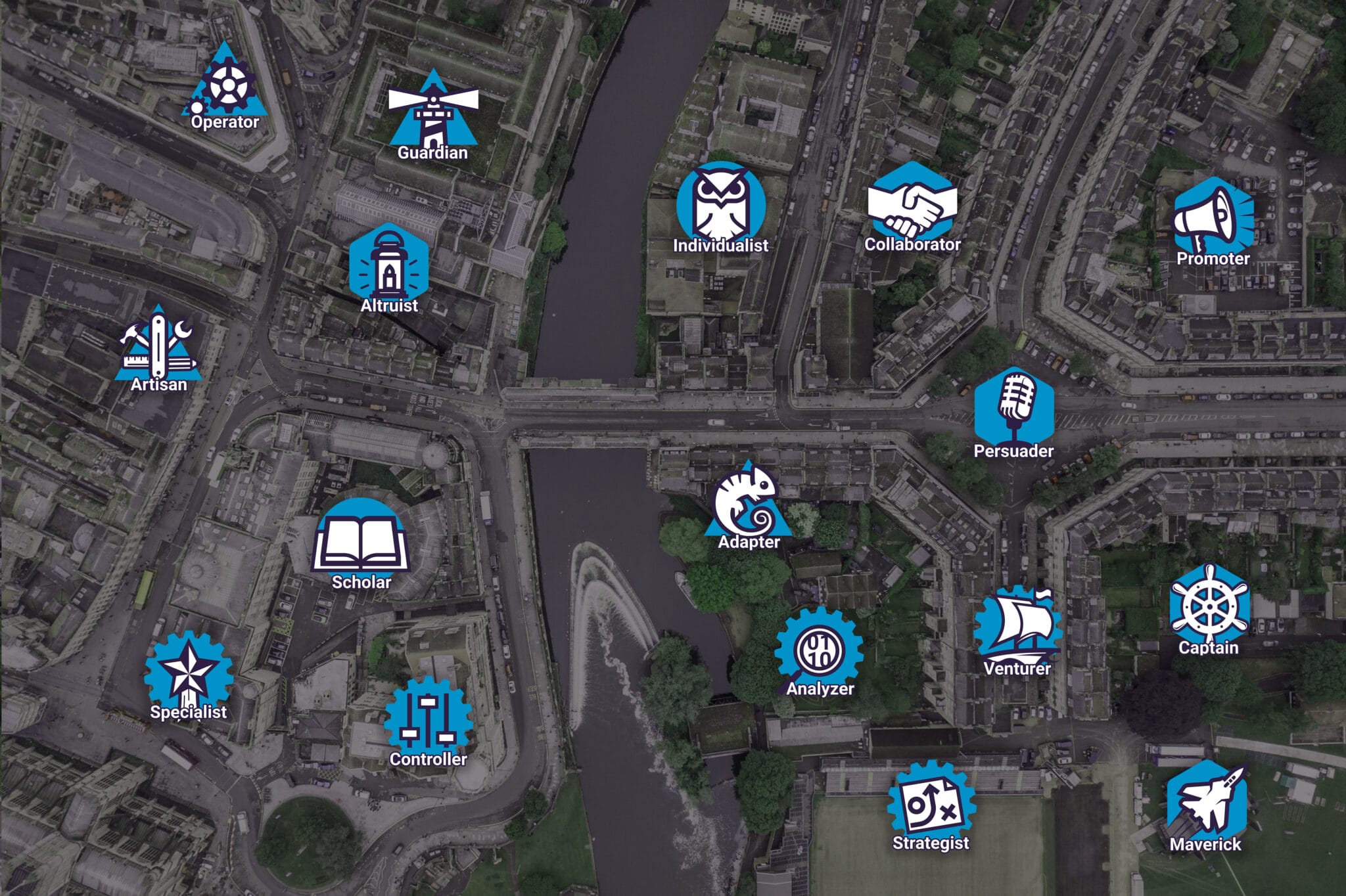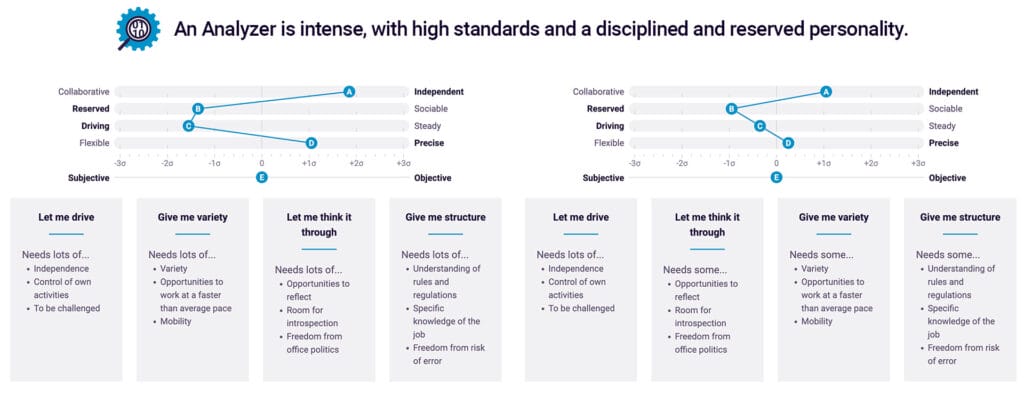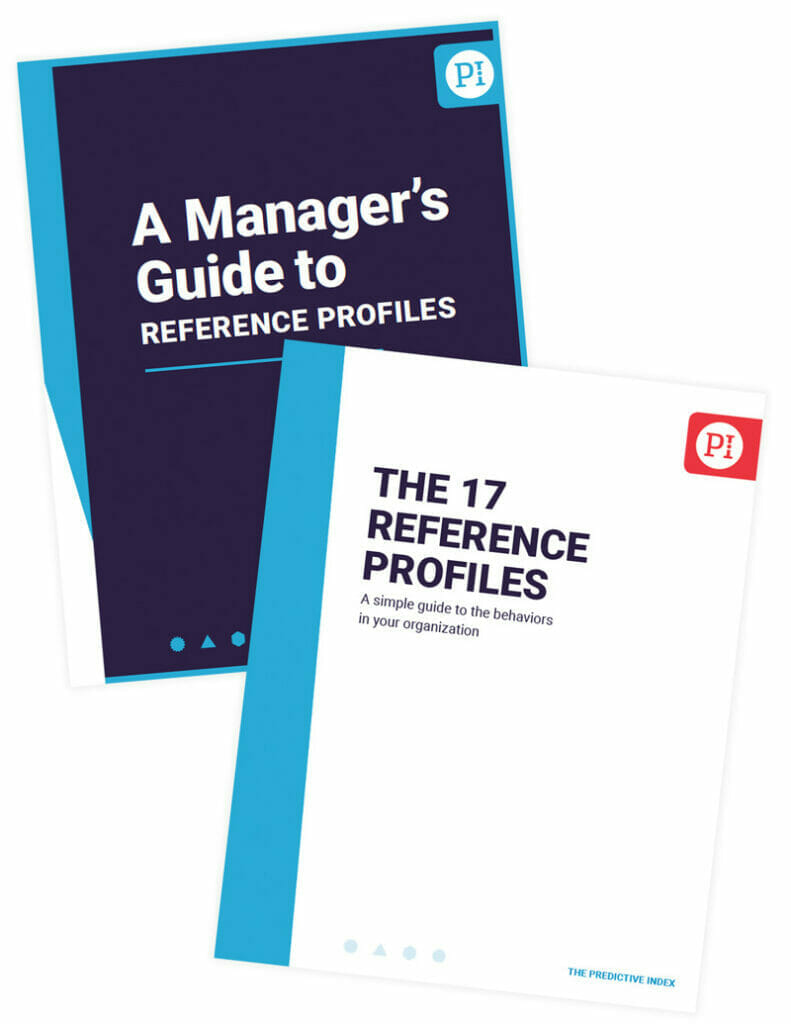Reference Profiles
Reference Profiles provide a rough description of a person’s PI Behavioral Assessment (BA) scores. They make it easier to understand and discuss BA results, which improves engagement, team function, employee development, and selection decisions.
When you ask someone where they live, they’ll likely tell you the name of an area or neighborhood. For example, someone from New York City might name one of 5 neighborhoods – the Bronx, Brooklyn, Manhattan, Queens or Staten Island. When they invite you to their house, they’ll give you their exact address.
Reference Profiles are general neighborhoods and behavioral patterns are unique addresses.

How are Reference Profiles determined?
Everyone who takes the PI Behavioral Assessment automatically falls under one of our 17 Reference Profiles, which provide a shortcut for understanding behaviors and needs that drive people. They provide a general idea of a person without having to know the specific amount of Dominance (A), Extraversion (B), Patience (C), or Formality (D) they have.
It all begins with the four factors (the foundation of PI’s methodology) and behavioral insights. Specific factors and patterns represent the true power of the BA, but Reference Profiles are descriptive, memorable, and helpful general categories for 17 different types of behavioral configurations.
They’re created by taking someone’s factor scores and comparing to prototypical Reference Profile patterns. Factor scores are essentially used as coordinates to determine a profile. People fall under whichever prototypical Reference Profile is closest to their pattern.
Reference Profile variability
Since Reference Profiles are based on the Euclidean distance between the placement of respondents’ factors from the coordinates of each standardized Reference Profile, it is inevitable that some patterns will be right “on the line” between two different Reference Profiles.
Remember, Reference Profiles bring you to a person’s general neighborhood, not their exact house. Some Reference Profiles have more variability in their patterns than others.
Two people might be Analyzers but have differences in their patterns, which creates different needs and different amounts of those needs. (Click the image to enlarge it)

You may also see instances where two patterns might look almost exactly alike but have different Reference Profiles. (Click the image to enlarge it)

There’s no need to worry if this happens. The general behavioral characteristics of each reference profile still apply. Reference profiles are broad categories and not specific patterns. Remember, the general behavioral characteristics of each Reference Profile still apply to these people.
This is why you should always take a person’s full pattern into account.
Using Reference Profiles with candidates and employees
Reference Profiles are not substitutes for the Factor scores and Behavioral Patterns. They do not represent a validated output on which decisions should be based. They can help communicate the results of the BA, but they are not used for fit calculations, and they should not be used to make hiring decisions.
FAQ: Do certain Reference Profiles tend to succeed in certain jobs?
Unlike the PI Behavioral Assessment Factor scores, reference profiles are not valid for hiring, but certain Factors may be commonly related to performance for a given job role. This means that some reference profiles are commonly sought out for certain roles.
That said, the same role might have different behavioral requirements depending on the company or the work environment. It’s also true that several profiles may be successful in the same role. As a result, we don’t recommend a “one-size-fits-all” approach, where you only allow a certain Reference Profile for a role.
Reference Profiles are descriptive, memorable, and helpful general categories for the 17 different types of behavioral configurations. They make it easy to quickly communicate some standard behavioral traits. They’re also fun for you and your co-workers. Share your Reference Profile with pride!
The four Reference Profile groups
To create an even faster way to understand some basic information about Reference Profiles, they’ve been assigned 1 of 4 groups. They are Analytical, Social, Stabilizing, or Persistent. Each group is represented by a different shape. A gear for Analytical, hexagon for Social, triangle for Stabilizing, and circle for Persistent.
Each Reference Profile belongs to one of four groups: Analytical, Social, Stabilizing, or Persistent. Each group has a shape behind its icon that can give you some general information. While Reference Profiles are very specific, the groups represent broad categories of workplace behavior.

ANALYZER | CONTROLLER | SPECIALIST | STRATEGIST | VENTURER
The five reference profiles in the Analytical group, with the gear shape, are typically more dominant than extraverted and have a low amount of patience. People in this group are generally more focused on tasks than people or relationships and tend to work at a fast pace.

ADAPTER | ARTISAN | GUARDIAN | OPERATOR
The four reference profiles in the Stabilizing group, with a triangle shape, are typically less dominant and extraverted while having a high amount of patience and formality. People with profiles in this group are generally steady, detailed, and work well with structure.

INDIVIDUALIST | SCHOLAR
The two reference profiles in the Persistent group, with a circle shape, are typically more dominant than extraverted with a high amount of patience. People with profiles in this group are generally task-oriented and deliberate.
Reference Profile guides

The 17 Reference Profiles guide will help you fully understand a person’s needs, behaviors, signature work styles, strengths, common traps, and how to work well with each profile.
Our Manager’s Guide to Reference Profiles provides information on how to motivate and recognize, provide direction and feedback, delegate, and coach each Reference Profile.
A deeper look into each Reference Profile
Translated Reference Profile guides
To inform us of a typo or other error, click here. To request a new feature, click here.
